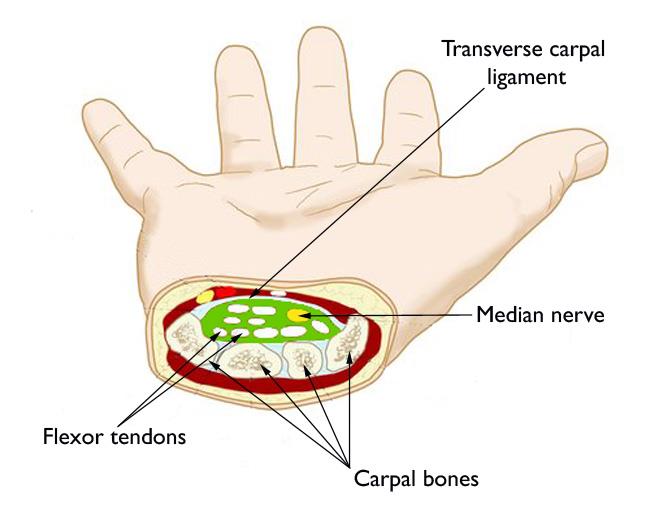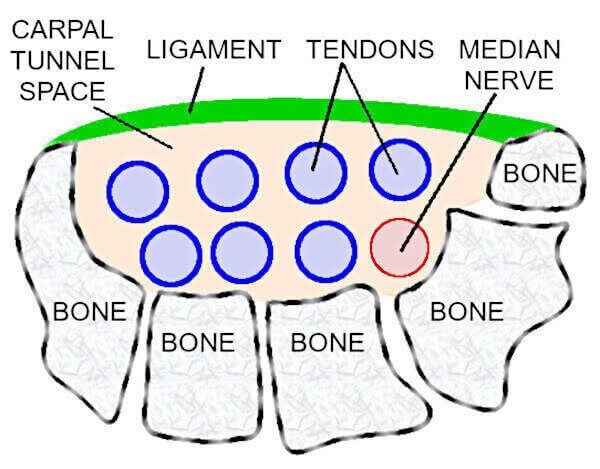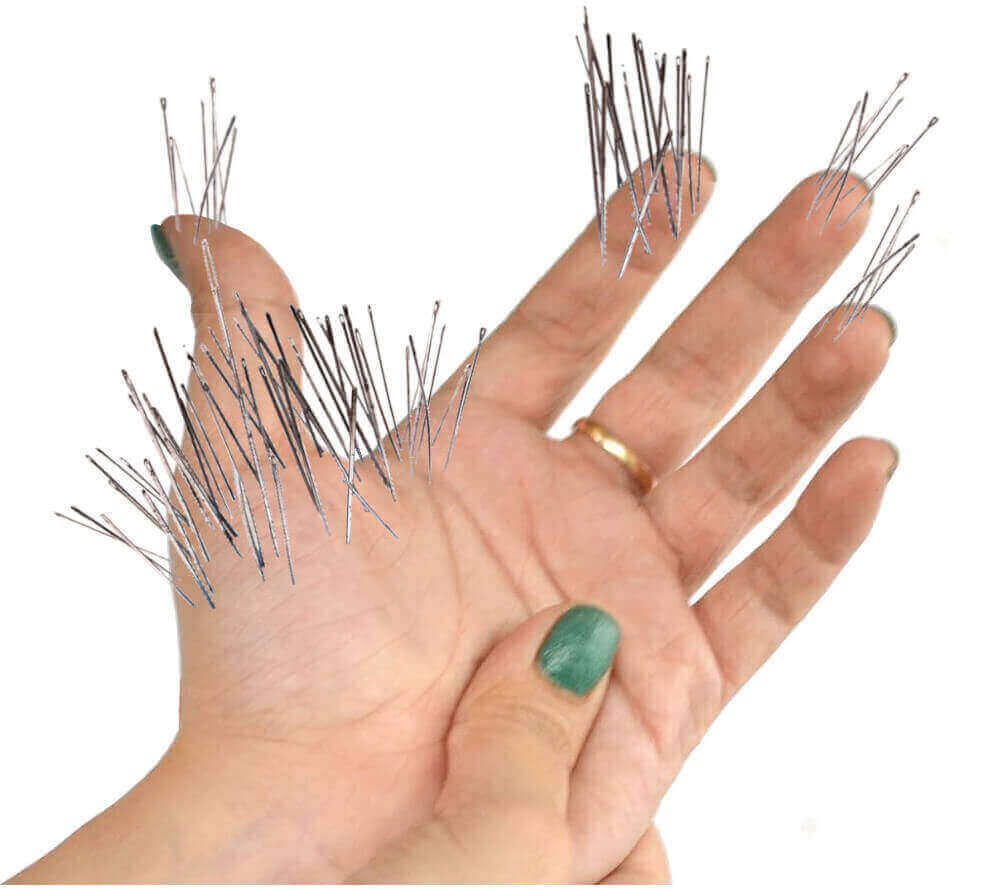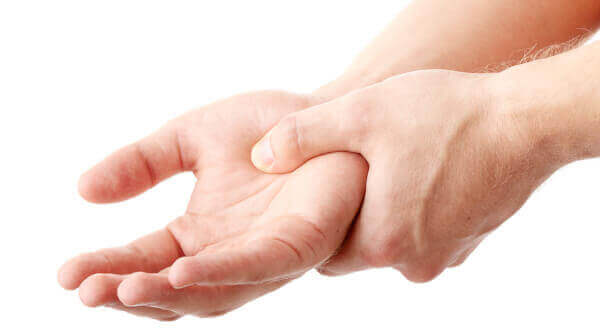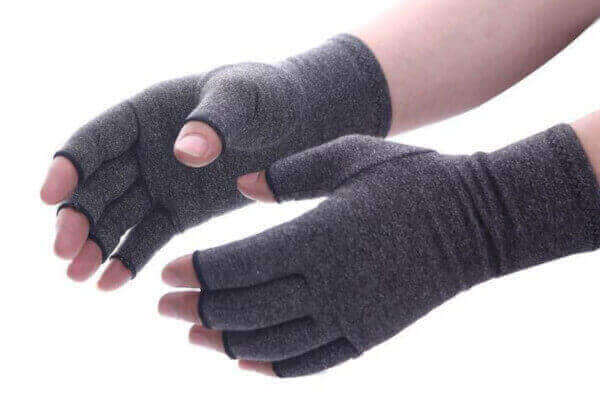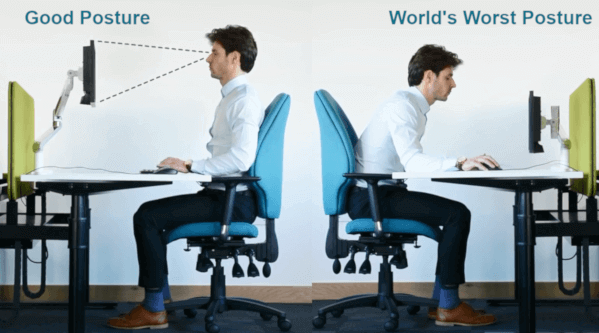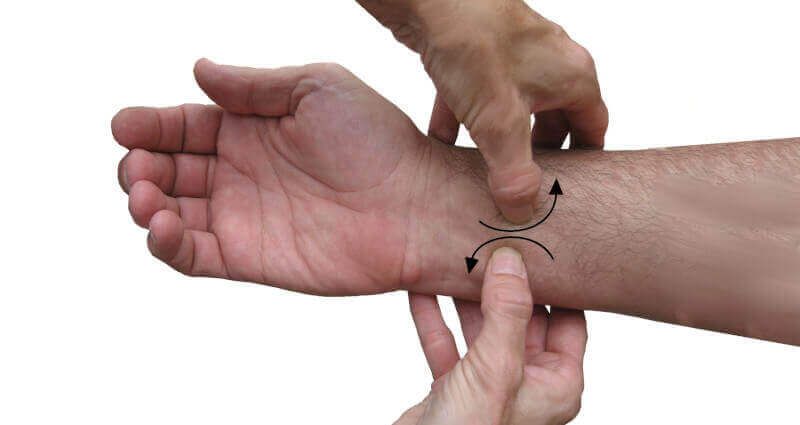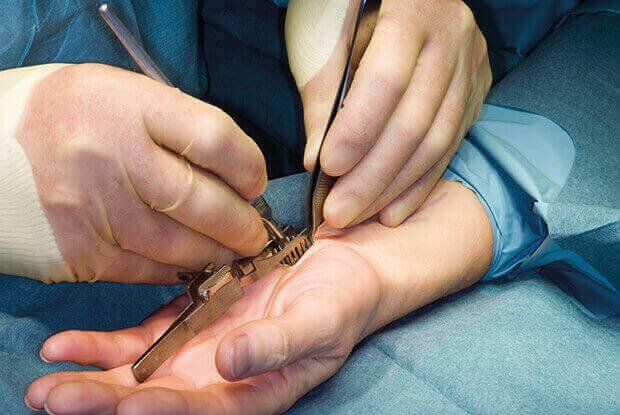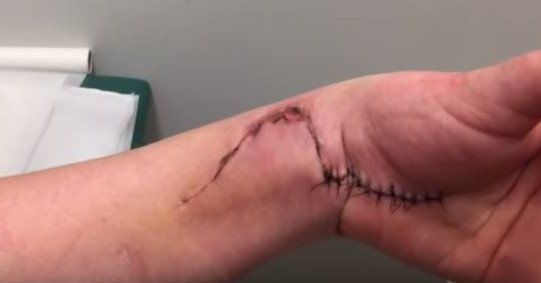What is Carpal Tunnel Syndrome?
Patients always ask me,
"What
IS carpal tunnel syndrome anyway?"
I'm happy to give you the
detailed medical explanation -- but everybody would go to sleep.
Instead, I usually describe what's
really important to know. Here it is -- hopefully without being cluttered with details.
Once you understand the basics, the next step is easier. That step is
choosing a carpal tunnel doctor. It's an important step because your doctor will influence you the most.
With this basic knowledge, you can have an informed discussion with him or her. Ask him or her the hard
questions. After all, it's
your health on the line. So be clear-minded and prepared to make the best decisions as you and your doctor go forward.
What is carpal tunnel syndrome?
When patients ask,
"What is carpal tunnel?" they're usually asking what the medical condition called
carpal tunnel syndrome
is all about.
Most people just call the condition "carpal tunnel" for short. Basically, carpal tunnel is a disorder of the
median nerve inside your wrist joint. That's one of the main nerves of the hand.
If your hand of fingers are hurting or go numb, then you have the first
signs of carpal tunnel syndrome. These signs also can include:
- Pain, numbness or tingling happening at night
- Your thumb and forefinger are worse than your other fingers
- Your little (pinky) finger is spared
The condition is so widespread that the U.S. Centers for Disease Control (CDC) estimate most people with chronic
finger or hand pain (excluding those with arthritis) actually have carpal tunnel instead of something else.
Today, the condition affects nearly 20 million Americans. And 250,000 new cases of carpal tunnel appear each year.
A peripheral entrapment neuropathy
Doctors call carpal tunnel syndrome a “peripheral entrapment neuropathy”. That means the median nerve (running between the arm and the hand, through the wrist) is squeezed or compressed.
What happens to the median nerve?
Among other things, the median nerve controls sensations on the palm side of the hand. It also transmits sensations from the thumb and fingers (but not the little finger).
How the median nerve gets crushed
So the quick answer to,
“What is carpal tunnel?" can be directly described as being caused by a
crushed median nerve .
But how is the nerve crushed?
The crushing starts because
inflamed & swollen tendons cause a build-up of fluid pressure inside the wrist joint.
So it's the increased fluid pressure that crushes the nerve.
What causes increased fluid pressure? That pressure increases due to tendon inflammation. If tendons lose the ability to glide smoothly, they inflame and swell with fluid.
The innocent victim is the median nerve. The swelling tendons compress and push it against the carpal tunnel bones. Crushing the nerve is inevitable.
So the specific answer to,
"What is carpal tunnel?" is actually:
"Inflamed tendons that swell with fluid inside the wrist joint, ultimately crushing the median nerve."
It’s no wonder why many pregnant women suffer from this condition.
Carpal tunnel in pregnancy arises because hormonal changes cause fluid imbalance. Therefore fluid builds-up in the joints, like the wrist joint. More fluid means more pressure and more compression or the median nerve.
That means more carpal tunnel symptoms during pregnancy!
What are carpal tunnel's main symptoms?
Initial symptoms
Numbness and tingling (pins & needles)
are
by far the most common initial symptoms of carpal tunnel syndrome. And they can be very distressful.
Pain
is the next most common symptom. However, other people can experience:
- Puffiness
- Burning
- Soreness
- Shooting electric shocks
- Weakness
Carpal tunnel symptoms usually begin slowly. But a quick onset can occur - especially during pregnancy. However, even during pregnancy those
symptoms may take 2-6 months to develop fully.
Alternatively, pain may be a primary symptom instead of numbness or tingling. Pain usually follows the same progression as numbness and tingling.
Under normal conditions, numbness & tinging (or pain) starts gradually. It can take months or (more rarely) years to be noticeable.
At this early (mild) stage it’s a common to lose sleep. That's because you wake up having to shake out the numbness in your hand. Or perhaps the pain wakes you up. Less commonly, people initially feel the other sensations (burning, itching, puffiness, etc.) first.
Any of these sensations can occur in the
palm of the hand or fingertips. Symptoms usually are worse in the thumb and index fingers. In some, the thumb is especially painful.
Generally, symptoms in the dominant hand appear first. It also has the most intense pain. In its initial stages, fingers might feel swollen, even though they’re not. These sensations can occur in one or both hands simultaneously. When in both hands, it's called
bilateral carpal tunnel syndrome.
Pain or numbness during the day is not generally present unless you perform certain activities. For instance, simple everyday things like driving, typing, and even holding a phone or umbrella can aggravate the symptoms.
More severe signs
What is carpal tunnel like if you don't treat it? Symptoms worsen
- a lot.
As the median nerve gets more and more compressed, the condition advances. You might feel a decrease in
grip and pinch strength. It may be hard to make a fist or pick up small objects like keys or coins. Some people feel clumsy buttoning a shirt,
tying a shoelace or holding a coffee cup.
Carpal tunnel diagnosis
Early diagnosis is crucial
An early diagnosis of carpal tunnel syndrome is important to prevent permanent damage to the median nerve. In a
carpal tunnel test the doctor performs a physical examination of the hands, arms, shoulders and neck. This is important because it can rule out other painful conditions such as
arthritis. Sometimes doctors will
misdiagnose carpal tunnel syndrome as some other condition, like
wrist tendonitis or muscle strain.
During the exam, the doctor looks for tenderness, swelling, warmth and discoloration. The doctor also tests finger sensitivity. The muscles at the base of your hand are tested for strength and signs of wasting. Routine lab tests and X-rays can show if you have
diabetes, arthritis or fractures causing the symptoms.
Simple provocative tests for carpal tunnel syndrome
Doctors who suspect carpal tunnel syndrome will use some simple tests to mimic symptoms. These are called
provocative tests
because they "provoke" symptoms. They include the
Phalen,
Durkan
and
Tinel
tests.
Multiple studies show that these provocative tests are as good or better than a battery of other tests for carpal tunnel syndrome. and they cost almost nothing.
In past decades a diagnosis using
EMG tests confirmed carpal tunnel syndrome. It required using thin electrode needles inserted into the hand and wrist. That was followed by tiny electric shocks to determine the health of the nerve. This test is costly, uncomfortable and painful. It also gives
false positive results over 50% of the time.
This
misinformation
led to unnecessary carpal tunnel surgeries in patients who didn't need it. As a result, in recent years use of the
EMG exam has fallen out of favor with most doctors.
Finally, magnetic resonance imaging (MRI) and ultrasound can show the anatomy of the wrist. But they're useless as a primary diagnosing tool for carpal tunnel syndrome. Instead, they're used to help confirm the condition by excluding fractures, tumors, etc..
Who gets carpal tunnel syndrome?
Carpal tunnel syndrome usually occurs in adults. Since it's likely
genetically acquired, you're much more likely to get it if a close family member has it. Doctors don't completely understand this genetic link, but it's a real and definite relationship nonetheless.
Women are at least three times more likely to develop carpal tunnel syndrome. However, when statistical error is adjusted, women are actually
30 times more vulnerable .
Metabolic conditions like diabetes place a person at higher risk for carpal tunnel syndrome. That's probably because diabetes makes nerves more susceptible to compression. Having
hypothyroidism is similarly associated.
What is carpal tunnel prevention?
In an ideal world, you would take care of hand or finger symptoms as soon as they appear. But most people don’t do that. Usually it's because they don’t recognize the problem early enough to intervene. But if you already know you’re stressing your hands, preventing carpal tunnel syndrome from worsening starts with
avoidance.
1. Avoiding carpal tunnel syndrome
The National Institutes of Health and the
American Academy of Orthopedic Surgeons recommend several things you can do to avoid getting carpal tunnel in the first place.
• Begin by recognizing the highest risk factors, like typing, keyboarding, using power tools, or generally making forceful and repetitive hand movements.
• Take measures to reduce any hand-associated workloads, like taking shortcuts or resting periodically.
• Use hand rests when you can.
• Wear warm and well-fitting gloves as cushions (but never wear
compression gloves).
• Pay attention to the position of each hand while it works or types. For instance, too much wrist bending for a long time can cause
keyboarding stresses you might not even be aware of.
• At the workstation, maintain good posture. Studies show that poor posture is a
major contributor to carpal tunnel syndrome. adjust the chair,
keyboard, mouse and monitor height. Be conscious of posture and all of your hand positions.
2. Rest for carpal tunnel syndrome
Once you recognize you already have symptoms, then you can prevent them from worsening.
• Rest is key. Find ways to rest your hands as much as possible. Rest is one of the best things you can do to prevent hand injury.
• Take frequent breaks for your hands. Most rest periods only require 10 seconds every 10 minutes to be effective.
• Periodically stretch you fingers. You can do
quick exercises that take less than a minute. Then let your hands dangle, and shake them out. This increases blood flow and decreases inflammation.
Non-surgical carpal tunnel treatments
1. Changing your environment
Sick and injured tendons are what causes carpal tunnel in the first place. For the most part, your environment is contributing to it the most. Therefore, begin by removing or avoiding the activity causing hand stresses in the first place. For most people, the first place to look is on the job.
Almost everybody has to use their hands, no matter their occupation. So this can be tricky. But try to find ways to take shortcuts, and rest/stretch each hand frequently.
For instance, many people complain their mouse causes pain. So find ways to use the mouse without straining your fingers and hand.
2. Use a night brace or splint
If symptoms are getting worse, then you must wear a good
carpal tunnel brace at night. When we sleep we unconsciously bend our wrists (“hyper-flex” or “hyper-extend”). This increases pressure inside the wrist joint, especially in the carpal tunnel space. A brace can prevent that by immobilizing the wrist.
So a carpal tunnel night brace will keep your hand from over-bending while you sleep. But the
wrong
brace can make it worse. If the brace has a
palmar spine, then bending your wrist backward causes the spine to press into your wrist joint. That increases pressure below the skin.
Of course, more pressure is not healthy for the median nerve. So in the morning you may wake up with hand & fingers that are
more numb or painful.
So beware: Ordinary wrist braces are bad. But a
certified carpal tunnel night brace doesn't have a palmar spine.
3. Limited use of anti-inflammatory (NSAID) drugs
These drugs include
NSAIDS , like Advil, Tylenol, Aleve and Motrin. Take them to relieve pain
only when pain is unbearable.
They can reduce swelling around the median nerve. This eases the pressure and irritation on the nerve, which reduces pain.
However, all NSAIDS are toxic and
potentially dangerous. Taking them continually for
more than a few weeks can cause kidney and liver damage. They may also increase the risk of heart attack and stroke. So use them only when pain is extremely severe, and never on a long term basis.
4. Stretching exercises
You should stretch your fingers often, especially if you do a lot of manual work. There are a number of finger, hand, and wrist
stretching exercises you can do. They take only a couple minutes but can make a huge difference.
Therapists suggest doing about 1 minute of exercises for every 30 minutes of stressful hand activity (like keyboarding). This can both avoid symptoms of carpal tunnel and help reduce any symptoms you might already have.
5. Steroid injections
If you’re considering steroid (cortisone) injections as a non-surgical option for carpal tunnel, then consider it carefully. New research shows these popular steroid shots (which cost $300-$500 each) don’t help most carpal tunnel patients in the long-term.
5. Myofascial release massage therapy
As carpal tunnel symptoms worsen, myofascial release massage
is an excellent remedy. It's an ancient technique which still works today. Usually a therapist works the tissues of the wrist and forearm using a kneading motion.
6. Avoid supplements
Supplements are
not an effective treatment for carpal tunnel. This is a serious condition that no pill or herb can eliminate. But I include it here to warn the thousands of patients who ask me about supplements every year.
Bottom line: don’t waste time & money on supplements for carpal tunnel. There is no evidence any of them have any effect whatsoever. This is especially true for
vitamin B6 or B12. They do not help carpal tunnel syndrome at all.
Yet some people claim beneficial results – which is probably a placebo effect. But if you insist on dosing yourself, do not take more than 100 milligrams of vitamin B6 daily; it can make you sick and cause other problems.
And
never use
homeopathic remedies. They're a complete
scam
on the public, and thankfully scheduled to be removed from all store shelves.
Surgical carpal tunnel treatments
Many patients ask,
"What is carpal tunnel surgery's success?"
To answer that, you need to understand what the surgery attempts to do.
Carpal tunnel surgery aims to cut the
transverse carpal ligament over the wrist joint. This lets the wrist bones snap apart. Doing so opens up the carpal tunnel, giving the median nerve "room to breathe". This, then relieves pressure on the median nerve.
INTERESTING FACT:
That pressure is extremely high. When doctors pierce the carpal tunnel space, they usually warn assistants to, "Stand back!". The fluid can squirt out the wrist joint and hit the surgical lights!
Two basic types of carpal tunnel surgery
Carpal tunnel release surgery can either be
open
or
endoscopic. Both aim to cut the ligament holding the wrist bones together.
Open technique
Open carpal tunnel release surgery means the surgeon creates a 2-3 inch slit on the palm. The surgeon cuts the ligament, and then sutures the skin closed. This results in a significantly long scar on the palm.
- The
advantage
of this technique is that the surgeon can clearly see all of the structures in the hand. That means there's less chance to accidentally lacerate an important structure like a nerve or blood vessel.
- The
disadvantage
of the open technique is that there's much more hand trauma. This means more postsurgical pain and longer
recovery and aftercare.
Endoscopic technique
Endoscopic carpal tunnel release surgery is a little different. It means a surgeon uses an endoscope to see inside the carpal tunnel space rather than opening the skin over the palm. The surgery uses a thin, flexible tube containing a camera guided through a small incision in the wrist.
Sometimes the surgeon makes two small holes; one in the wrist and one in the palm. This is called
double portal endoscopic carpal tunnel release surgery.
- The
advantage
of endoscopic surgery is that the surgeon cuts the ligament without having to make a large incision. This means less trauma. And less trauma means less postsurgical pain and faster recovery.
- The
disadvantage
is that endoscopic surgery provides lower visibility. This means a grater chance to accidentally lacerate an important structure.
Recovery and aftercare
After surgery (no matter the type of operation) you can usually go home the same day. But
carpal tunnel surgery recovery can take a long time. Think of it as a marathon and not a sprint.
When you get home, first and foremost you must manage the
postsurgical pain with medicines. This pain subsides in a few days.
Meanwhile, during the first 1-2 weeks you must take care of the bandaged area. Keep it clean and dry. Avoid wetting the bandages at all costs. You also must sleep with your hand elevated.
Every patient will require 3-12 months of hand rehabilitation and physiotherapy. Every patient must also avoid heavy use of their hand for a few weeks.
Returning to work
The time it takes to return to work depends on the individual. Usually, there are several factors that determine when you can go back to work. These are:
- Which surgery you had (open or endoscopic)
- Your overall health (including pre-existing chronic illnesses)
- How fast you naturally heal
- Whether or not you had dominant hand surgery
- If you perform a lot of hand activities on the job
- How well you commit to hand rehabilitation
What is carpal tunnel surgery's success?
This is one of the most frequent questions I get from patients. It's also one of the most difficult to answer. That's because everybody is different and heals differently.
Mostly, it depends on how you define "success"!
How a doctor defines surgical "success" or "failure"
Doctors divide the results of surgery into "success" or "failure". Most doctors claim carpal tunnel surgery is successful 80-90% of the time.
A doctor's definition of success is when
ONLY ONE
of the following happens after surgery:
- The carpal ligament was cut without damaging the median nerve or blood vessels
- There are no long term complications like nerve injury or infection
- The patient has good results immediately
- Good results were obtained within 6 months
- Most of the symptoms resolved within 2 years
If none of the above criteria are met, then the doctor defines the surgery as a "failure". By far, the greatest reason for "failure" is if symptoms were not eliminated or if they returned.
Note that none of these "doctor's criteria" ask how a patient feels!
Doesn't it make sense that a patient's satisfaction with the results should be considered?
How a patient describes surgical "success" or "failure"
In the end, it makes more sense to ask a patient if they had success with their surgery. That means asking about a patient's "satisfaction". In other words, "Did symptoms go away?" Or, "Were the complications not worth the effort?"
In stark contrast to a doctor's definition, when
patient satisfaction is surveyed, over
50% of surgical patients say they are not satisfied with results after 2 years.
- Therefore about 50% of the time, patients deem surgery a "success". That's because symptoms go away for good and never return AND there were no complications.
- But in the other 50% of the time, the patients deem surgery a "failure". That's because either symptoms didn't subside at all OR some symptoms disappeared for a time only to return within 2 years OR there were significant complications like prolonged pain or permanent weakness.
The poor results at 2 years happens because surgery doesn’t address the underlying problem of carpal tunnel syndrome.
That's the tendon inflammation which produces swelling.
As a result, after surgery fluid just builds up again when the patient over-uses their hands. Then the problem starts all over from the beginning.
Summary
The simple question, "What is carpal tunnel syndrome and how do you treat it"? isn't so simple to answer. But the condition is definitely serious and requires immediate attention. So start taking serious action now before it worsens
- because it will. Be your own healthcare advocate because no one will take better care of
you than
you .



